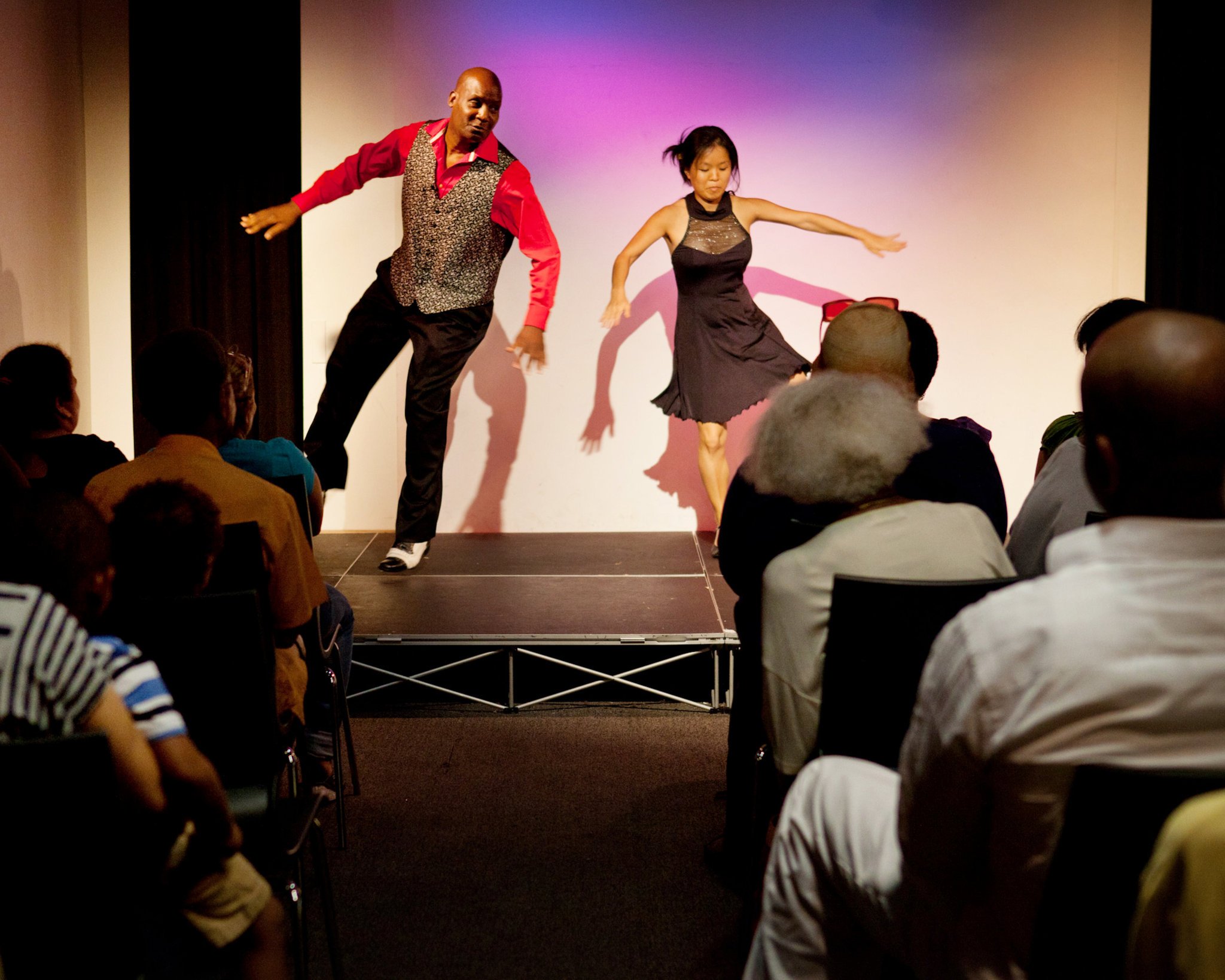
OUR HISTORY
THE DWYER CULTURAL CENTER
THE DWYER CULTURAL CENTER is a 7000 square foot, state of the art facility, dedicated to supporting Harlem’s artists and arts organizations and promoting the community’s cultural life. The DWYER includes a 75 seat multimedia theatre, state-of-the-art exhibition galleries, rehearsal multi use/workshop spaces as well as a new arts industries incubator.
THE DWYER CULTURAL CENTER is conveniently located at 309 West 123rd Street (also known as: 309 Ruby Dee Place), between Fredrick Douglass Boulevard and St. Nicholas Avenue. It’s available for rental at affordable rates. For further information about the DWYER, its programs and rental rates please contact our offices at (212) 222-3060.
THE DWYER CULTURAL CENTER is a division of the International Communications Association, ICA, a 501(c)(3), not-for-profit organization.
INTERNATIONAL COMMUNICATIONS ASSOCIATION
Mission: To develop spaces in under-served communities, to highlight and train people and organizations for the performing arts, fine arts. Television, video and film, recording and allied media institutions.
Background: The International Communications Association was founded in 1986 as a vehicle to promote equity and access for African Americans and people of color within the arts, media and entertainment industries. Based in Harlem, ICA serves to encourage the development of training and employment opportunities for people of color in the performing arts, fine arts, television, motion picture and related industries.
In 2007 ICA completed the co-development of the ten-story Dwyer Building located in Central Harlem and developed the 7,000 sq. ft. Dwyer Cultural Center, located on the street level and lower level of the building which it owns.
The Dwyer Cultural Center includes a 75 seat multimedia theatre, state-of-the-art exhibition galleries, rehearsal multi use/workshop spaces as well as a new arts industries incubator. The facility currently serves as a dynamic center with a focus on Harlem art and culture and houses ICA’s headquarters.
Where It All Started…
In 1968, with a $50,000 grant from the American Film Institute, the Community Film Workshop Council (CFWC) was founded to assist filmmakers and filmmaking groups emerging from low income communities throughout the United States and Puerto Rico.
Cliff Frazier was hired as CFWC’s Executive Director. A national organization headquartered in New York City, CFWC enjoyed an inspirational Board of Directors that included Sidney Poitier, Harry Belafonte, George Stevens, Jr., Shirley MacLaine, Ossie Davis and Gordon Parks. With funding received from the U.S. Office of Economic Opportunity in 1969, CFWC trained minority filmmakers for entry level positions as newsfilm camera operators, sound recording technicians, newsfilm editors and news writers, placing them at local television stations throughout the United States. This initiative changed the employment of minorities in the television industry nationally.
CFWC also created film work-shops in Chicago, Atlanta, Hartford, Santa Fe, New York (CFWC of New York received major funding from the NYC Department of Employment to continue its film and video training programs), San Juan, Visalia, California and the Apalshop in Whitesburg, Kentucky. Two of the workshops, CFWC of Chicago and Apalshop, continue to exist over 40 years later. Apalshop also operates its own radio station, a theatre and a distribution company.
Professional actors Ossie Davis, James Earl Jones, Diana Sands, Rita Moreno, film producer Hannah Weinstein, and writers Piri Thomas and John O. Killens were determined to train Blacks and Puerto Ricans for behind the scene film jobs. The result was Third World Cinema Productions, Inc. (TWC), which had two objectives: to train people of color for work in the film industry and to make feature films from a minority perspective.
TWC received its funding from federal grants including $200,000 from the NYC Manpower Career and Development Administration and $400,000 from the Model Cities program to operate its training programs; Cliff Frazier was the administrator. The goal of TWC was to infuse Black films with warm, human relationships to alter the negative impact on young Black youth of films that concentrated on violence and crime.
Founded in 1971 by the iconic actor and activist Ossie Davis, the Institute of New Cinema Artists (INCA) had a mission to teach both the creative and technical trades employed in a variety of related film trades. Cliff Frazier was the Executive Director of the program, which placed over 600 minorities in film, television and allied media industry jobs.
In addition, to prepare minorities for jobs in the recording industry, INCA initiated a training program to provide instruction in recording engineering, record production, concert production, concert sound mixing, artist road management, artist personal management, public relations and more.
The alumni (students, interns and apprentices) of these programs made history and made a difference in film, television and allied media, achieving many “firsts” such as Mary Vaultz, the first Black television news camerawoman in the United States; who was hired at WMAL-TV, Washington, DC; Jessie Maple, the first woman to hold a union card in the Cameraman’s Local 644 and Film Editor’s Local 771; Sandi Vernon, the first Black woman hired as Production Manager at WNET-TV, New York, NY; Diane Tibbs, the first Black woman to operate video cameras for the New York Yankee baseball games; and Oyenike Osiapem, the first woman hired as a permanent video technician at WPIX-TV, New York, NY.
“My dearly beloved husband, Ossie Davis and I were very proud of the accomplishments of Third World Cinema, Community Film Workshop Council and the Institute of New Cinema Artist. For over thirty years we marveled at their accomplishments.” — Ruby Dee - Legendary Actress
Cliff Frazier and Ruby Dee















